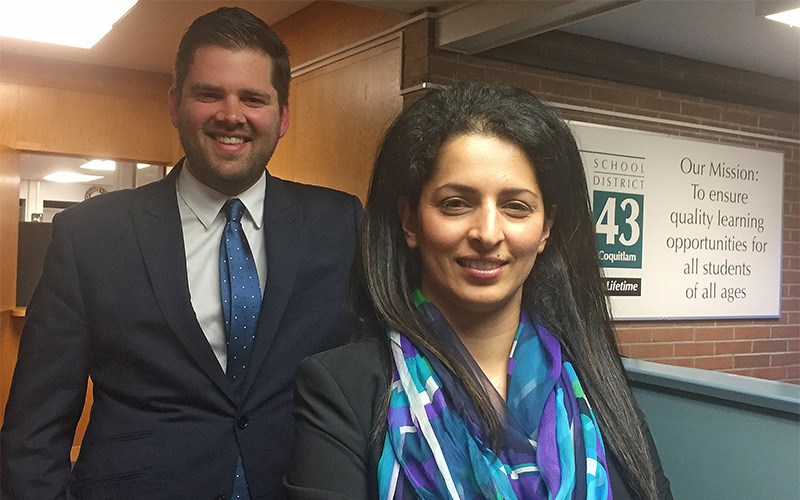Mood lighting doesn't only set the tone for a romantic dinner. Just the right light can wake you for morning activities and keep you active throughout the day.
And next school year, some students at Port Coquitlam's Riverside secondary will be test subjects in an experiment on how lighting can benefit learning.
Tuesday, the board of education was told that School District 43 has been a leader in switching over to LED lighting, with Citadel the first middle school and Terry Fox the first high school in B.C. with full LED lighting.
Now, as the district switches five more schools over to the energy-saving lights, a pilot project is in the works to study "tunable" LED lighting to see if changing the intensity of lights in the classroom from "cool" to "warm" can enhance learning.
"It's tied to the circadian rhythm," Cory Farquharson, a BC Hydro representative, told the Tri-City News.
UNIVERSITY RESEARCH PROPOSALS
The cool LED setting mimics the bright light of sunrise while the warmer light setting is similar to the afternoon glow of sunset.
He and Poroshat Assadian, the district's energy manager, are seeking proposals from UBC and SFU to study the effects of tunable LED lights at Riverside, which is slated for an LED retrofit this year.
The lights have a pre-sets but can be adjusted, Assadian said, and they are dimmable as well, giving teachers "full control" over the lighting in their classroom.
Farquharson added that students with special needs also benefit from the switch to LED lighting because the flicker from fluorescent tubes can be irritating, especially to students on the autism spectrum who have sensory issues.
Riverside's study will include four special needs classrooms and two regular classrooms, and the information collected will help determine how tunable LEDs can be used to spark the brain for learning, such as in the morning when young brains are sleepy, and calm kids down when they are overstimulated.
In a similar study conducted in South Korea and reported in huffingtonpost.com, researchers found student test scores were higher in classrooms with a cool, bluish light compared to the control group in the classroom with standard fluorescent lighting.
Students also reported they noticed the difference in lighting, something Ivano Cecchini, the district's assistant secretary treasurer for facilities and planning services, found at Citadel middle, where students commented positively on the switch to LED lighting.
"We're definitely on to something with this," Cecchini said.
In all, SD43 expects to spend $2.6 million on energy retrofits this year, including lighting, mechanical and HVAC upgrades.
ENERGY SAVING FAST FACTS
• Energy saved through conservation at SD43 schools: 1,427,000 kWh — the equivalent of powering 140 homes in a year
• Natural gas saved through heating and energy upgrades: 15,645 GJ
• Incentives from BC Hydro and Fortis BC for energy saving projects: $651,670
• Total SD43 cost savings: $811,000



